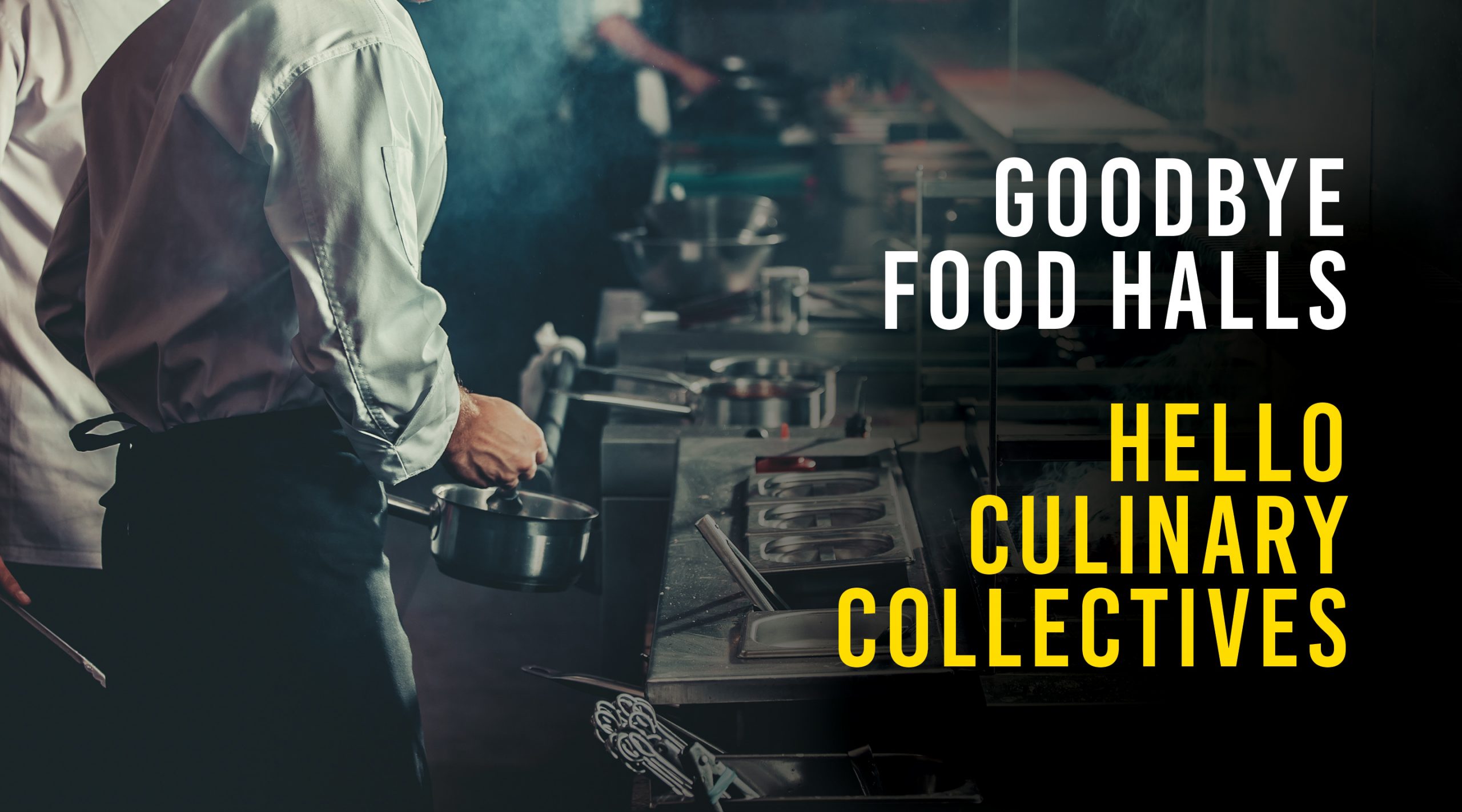Picking up a camera before a fork is not uncommon for foodies who like to capture and digitally share their cuisine, but in the future, the atmosphere may be just as appealing as the entrée, thanks to the evolution of food hall design. Today’s best food halls might be better defined as “culinary collectives.”
The ‘food hall’ term has been watered down to describe a myriad of dining venues, most of which feel like glorified office cafeterias or food courts,” said Cooper Carry’s Samantha Bennett, Associate Principal in the Retail and Mixed-Use Studios. “Places like this are not in the same category as this new breed of food halls, the culinary collective, which offer a much more refined and elevated culinary experience.”
Cooper Carry’s Retail Studio and The Johnson Studio worked together to transform two mixed-use projects into destination-worthy food experiences that transcend the common idea of a “food hall.”
One was The Exchange, a 26,700-square-foot food hall, part of the even bigger redevelopment of AT&T’s Dallas headquarters into the AT&T Discovery District. The Exchange features two levels of bars, 16 food stalls, and indoor-outdoor dining spaces.
They also collaborated on Assembly, a 29,000-square-foot food hall featuring two levels of stalls as well as high-end retail venues like a wine market, all conveniently housed at Rosslyn City Center in the DC suburb of Arlington, VA.
From Coffee to Cocktails, Options Abound for Return Visits
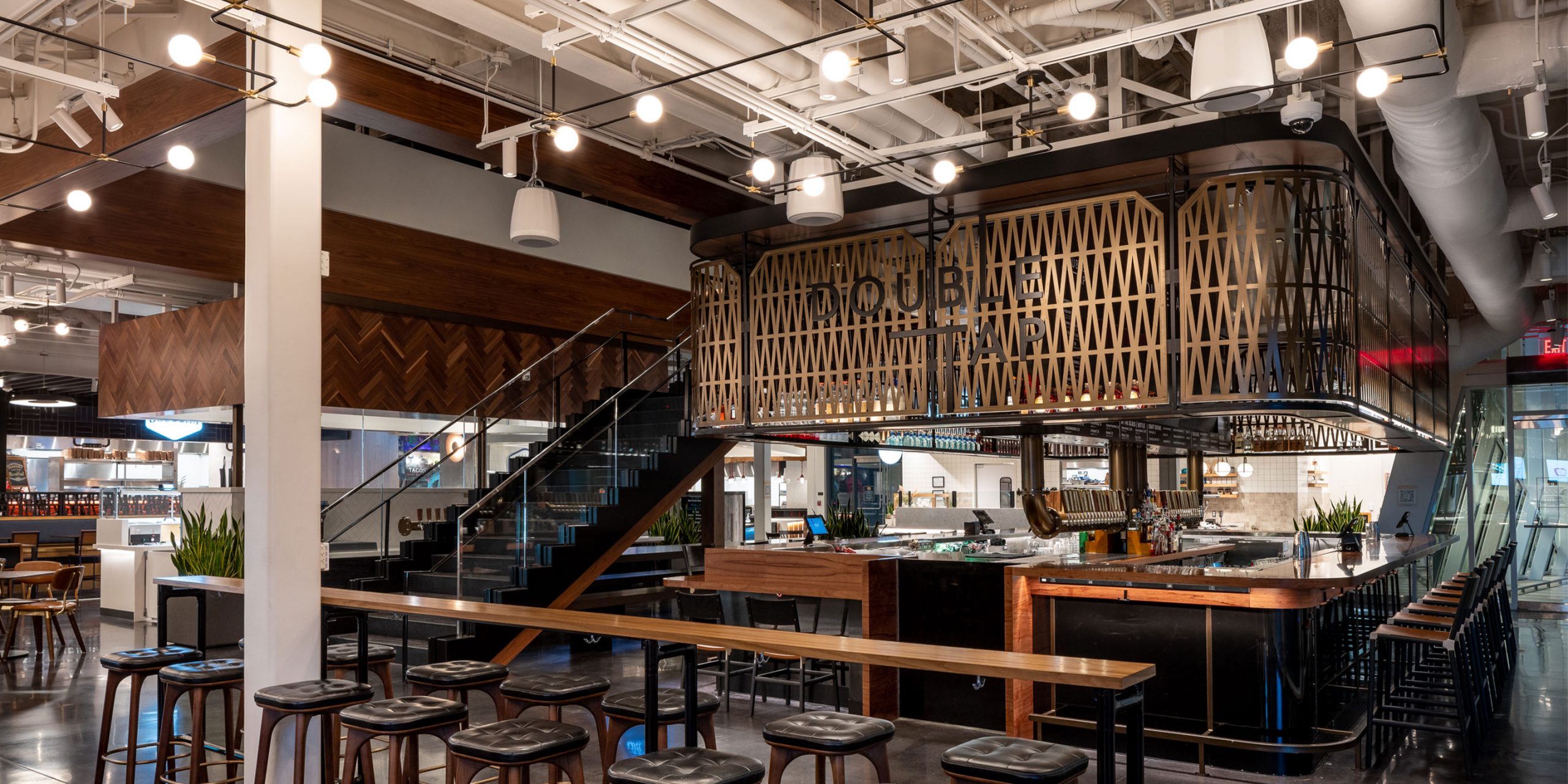
Even before the pandemic, food hall operators were looking to bolster repeat visiting by creating gathering places that support lingering. The Exchange features designated seating by the bar where office workers can sit, linger, and find a bit of creativity in the space to inspire their work.
Hospitality-focused design strategies make these spaces feel more like a hotel lounge, with a place to stop in the morning to grab coffee and then return for cocktails in the evening. Entertainment options can also enhance the number of repeat visits. At The Exchange, there are a multitude of indoor-outdoor dining spaces overlooking the AT&T Discovery District’s high-definition, nine-story digital media wall that streams concerts and other content up to 20 hours a day.
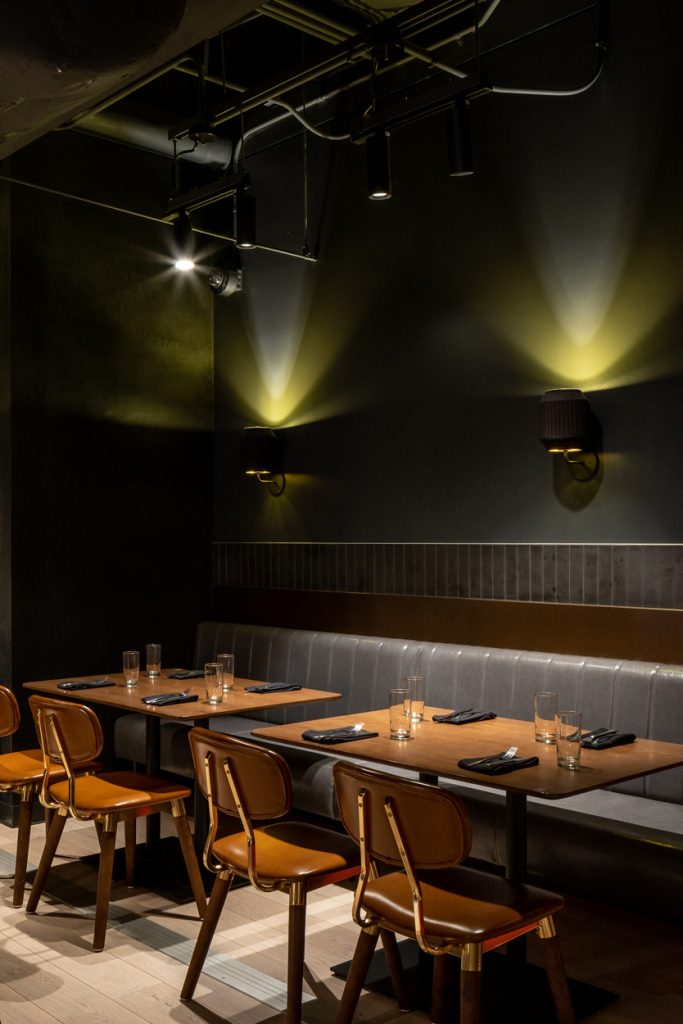
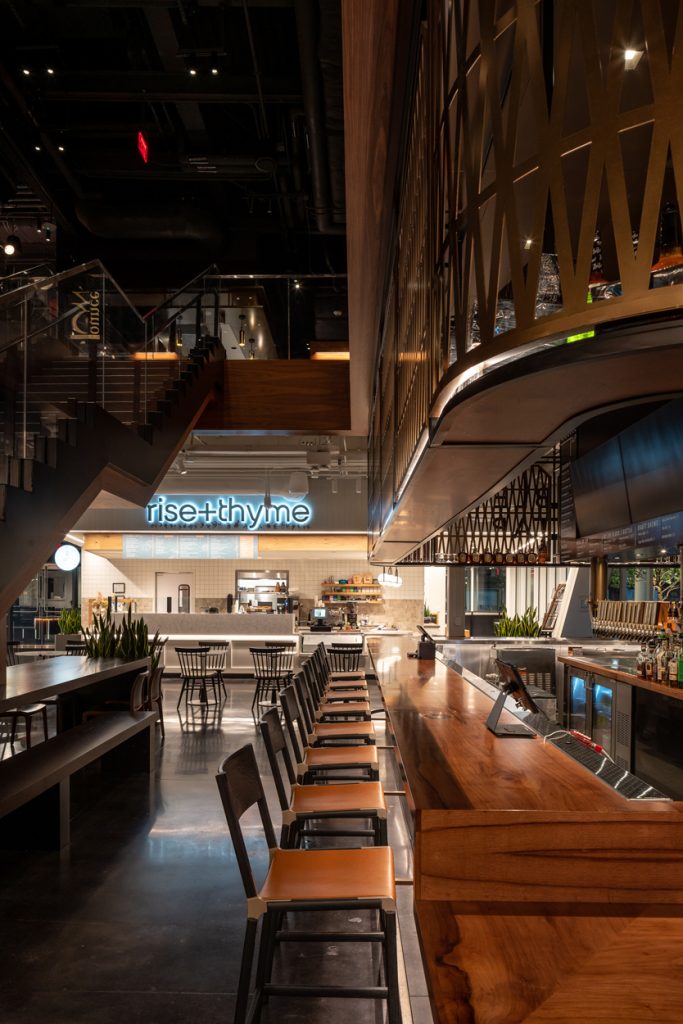
An increase in visitors may spur more operators to lease to additional businesses, turning these culinary collectives into full-scale mixed-use experiences, with venues to place orders for wine, custom prints, or even eyeglasses, and then return for pickup after enjoying a beverage.
There is also a movement among owners and operators to capitalize on areas outside of the central business district, opening the market for developing food meccas that are easily accessible for suburban commuters.
Location is also playing a role in menu offerings, as operators get better at curating a mix of tenants that feels authentic to the neighborhood or region. Some are leasing directly to local purveyors or utilizing the talents of one head chef or hospitality company to oversee and curate all stalls in the space.
“Food hall design should be adaptable to what you’re serving, where you’re serving, how you’re serving, and what’s best for the operator,” said Bennett.
No matter what route is decided, the design strategy must focus on promoting a unique style in each food stall, while remaining true to the cohesive vibe of the culinary collective and making sure it stands apart from the competition.
Hospitality Alliance handled the leasing of food stalls at The Exchange, with offerings that span several popular tastes, including Mexican, Southern, Mediterranean, desserts, breakfast foods, noodles, burgers, and pizza. To create a cohesive design strategy and ease the client’s concern of leasing to individual vendors, the team at Cooper Carry interviewed each food vendor and tailored the design to the individual brand, with a palette of materials and finishes featured on the façade of each food stall.
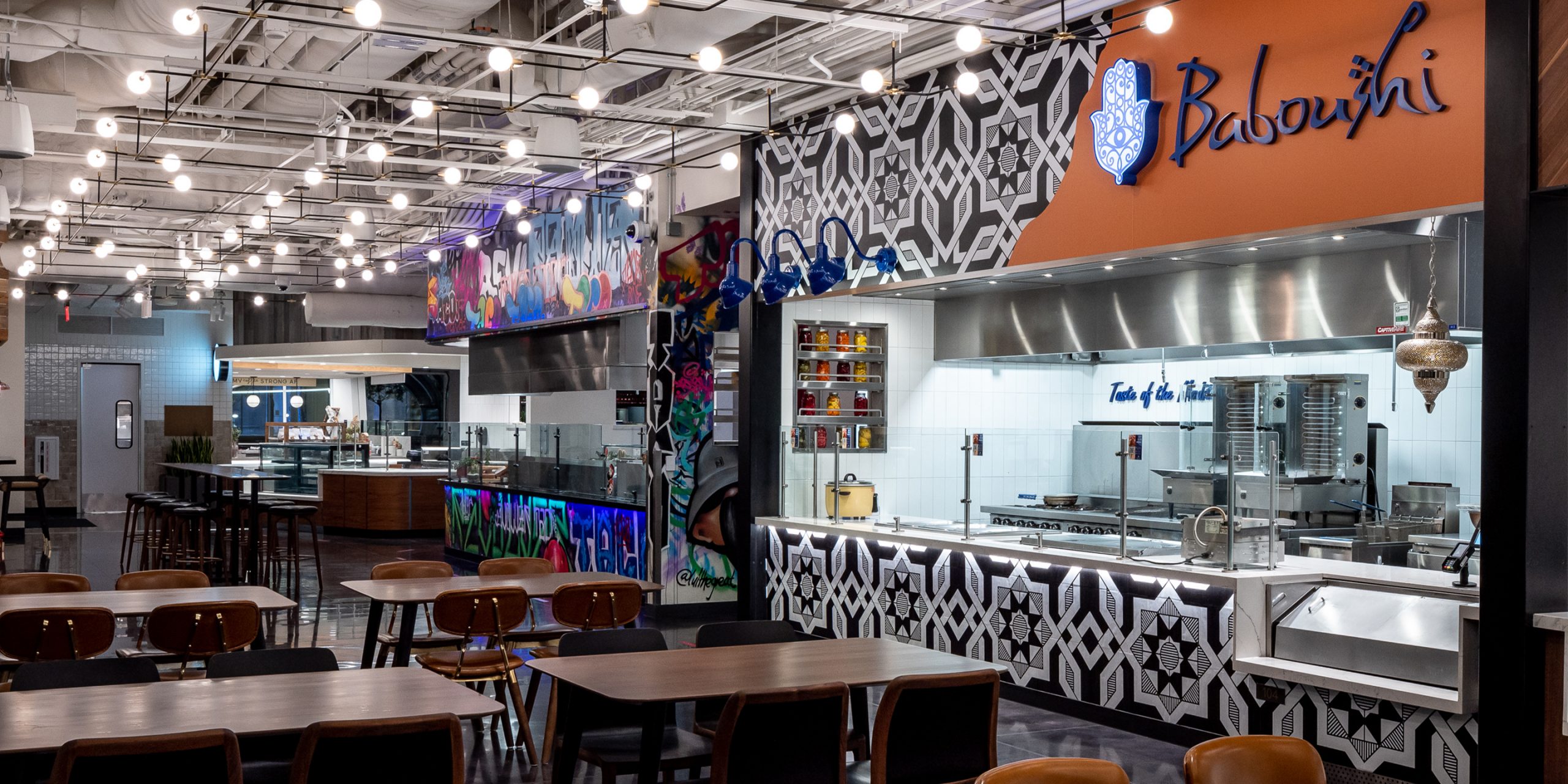
“We definitely tried to unify the whole space, to give it a sense of place,” said Ray Chung, Director of Design for The Johnson Studio, “Unlike other food halls that are in ‘raw’ spaces, we wanted to balance an identifiable look for the food hall with an interesting variety of individual operators. We worked with the large square footage to create zones and neighborhoods within the space to help break down the scale and provide a sense of orientation.”
In contrast, James Beard-nominated Executive Chef Brian Huston curated the diverse all-day dining and specialty food options, including an oyster bar, at Assembly. The Cooper Carry team then created a cohesive look to the space with nuanced touches to match the vibe of each cuisine, like in the structure of the menu boards.
Contemporary Design, Clustered Seating Nooks
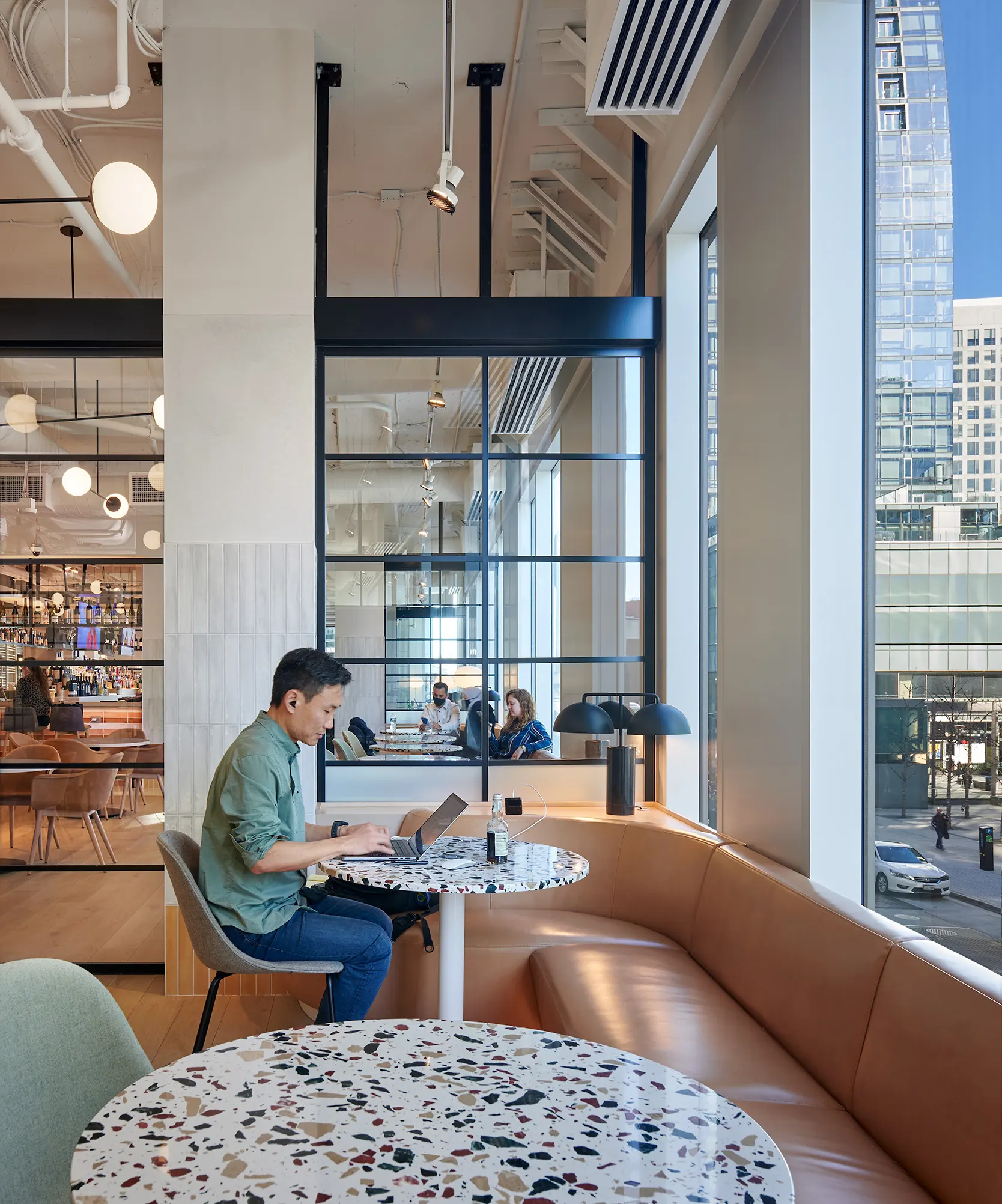
High design elevates the standard food hall into an intimate space where guests will want to stay and linger, or even do work away from home. This re-invigoration of the space was especially prevalent in Assembly, which had several issues to overcome.
The original building was constructed in the late 1970s and had already undergone multiple renovations throughout the years,” said Bennett. “One sign of the retail center’s age was low ceiling heights that made the space feel claustrophobic and crammed. Our solution was to touch up the walls with lighter paint colors, wood materials, and tile patterns to make it feel more spacious.”
Soft, warm lighting was installed to provide an immediate and stark departure from the food court stereotype. Lounge-style seating and clusters and nooks for privacy provide quiet focus zones to encourage lingering, while the other public spaces are more dynamic and bustling with energy.
With the COVID pandemic in full swing during the construction of these two projects, the designers created a seating configuration that deviated from the standard communal tables found in other food halls. They pivoted from larger spaces to a wider variety of different spots to choose.
There are intimate nooks that, within the food hall’s vast space, allow small groups to comfortably gather together again — fostering connection and community that people are especially craving now,” shared Daniel Sweeney, Assistant Principal in Cooper Carry’s Retail Studio.
The team factored in social distancing while maximizing natural space between tables to accommodate both COVID-19 restrictions and provide guests with extra space to work, if needed. At Assembly they created modular safeguards for each food stall, and QR codes at the tables allow visitors to seamlessly order without menus or wait staff. This eliminates long, crowded lines at the restaurants. Further, the adaptable spaces can function as areas for additional seating, while a larger kitchen on a separate floor supports the restaurants when all are open to serve the public.
In an article on the future of the restaurant industry, Forbes reported that takeout orders rose approximately 20% during the pandemic. Third-party delivery companies, like DoorDash and Uber Eats, were a main driver of this growth, which experts say will continue to increase. Designated spaces to pick up to-go orders accommodate this trend and protect the intimacy of the main dining areas. At The Exchange, there is a vestibule with lockers for hot and cold foods, so guests-on-the-go and delivery drivers don’t even need to run into the main food hall.
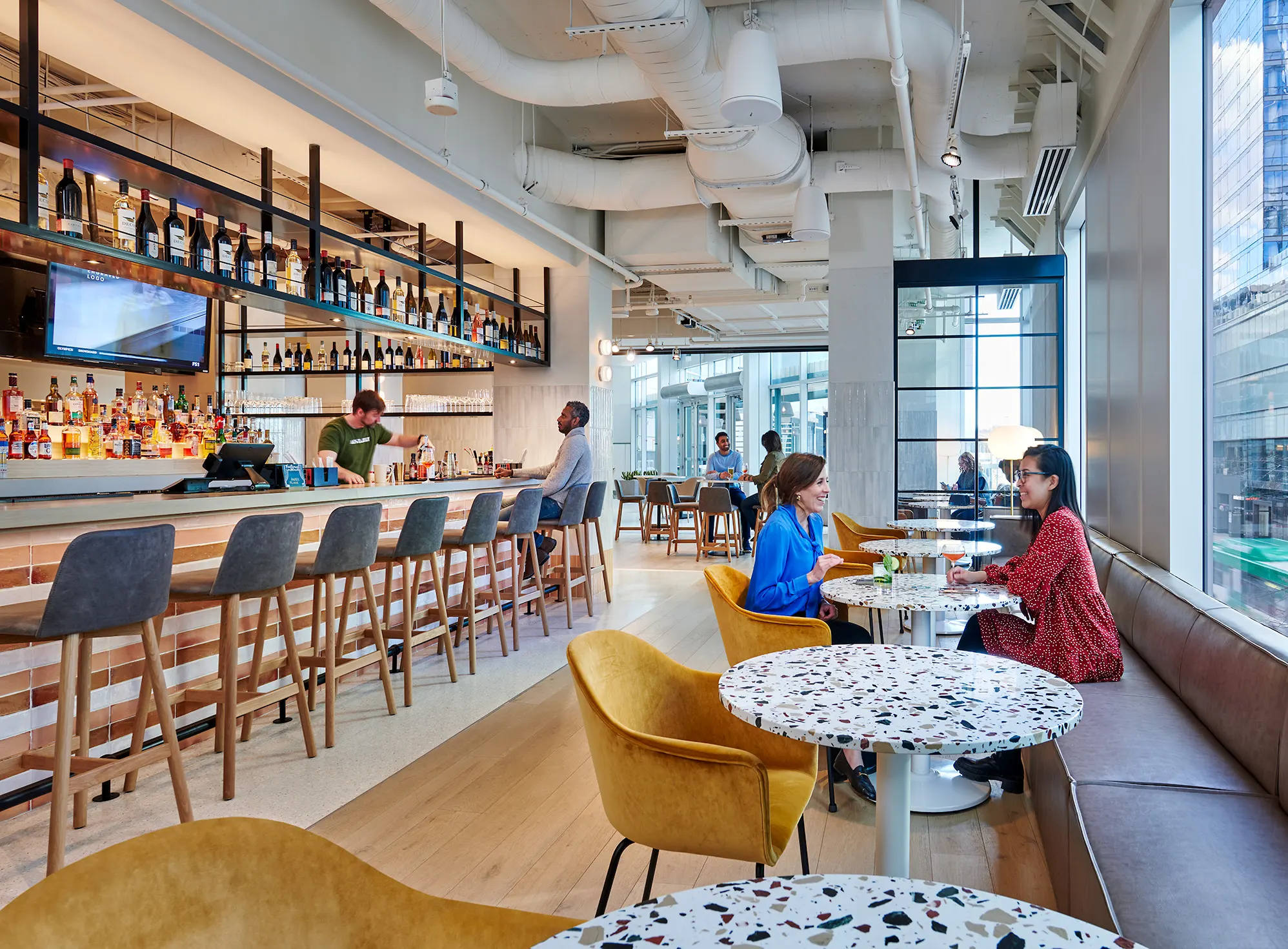
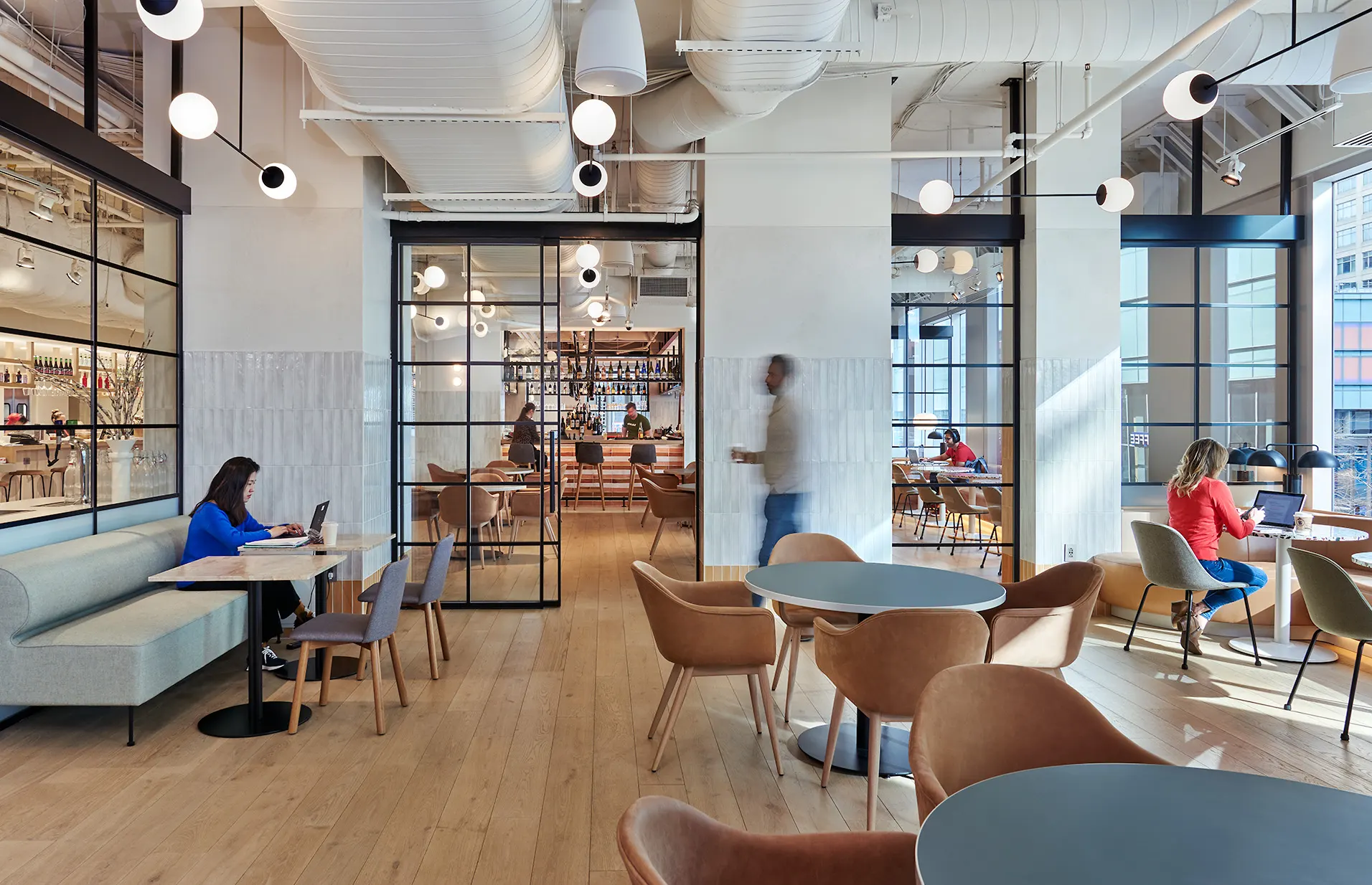
The Instagram Effect
AT&T Discovery District features an interactive space which immerses guests in AT&T’s long history with telecommunications. There are areas for photo-ops and plenty of opportunities for visitors to tag their images. Similarly, at Assembly, trellis structures and outdoor bar carts are organized to create a separate space that is elevated up above the adjacent Plaza Street for optimum photo backgrounds. Further, guests can “discover” a secondary bar with dedicated murals that is tucked into the corner of Assembly.
Daniel Sweeney said, “At The Exchange, we have a stall completely dedicated to rotating chefs, so the whole counter experience, menu display, and storefront changes with the chef. This gives the chef the ability to curate the look and feel of the experience as well as promote it on social media.”
Visit The Johnson Studio at Cooper Carry for more on our food hall design and restaurant design expertise.
